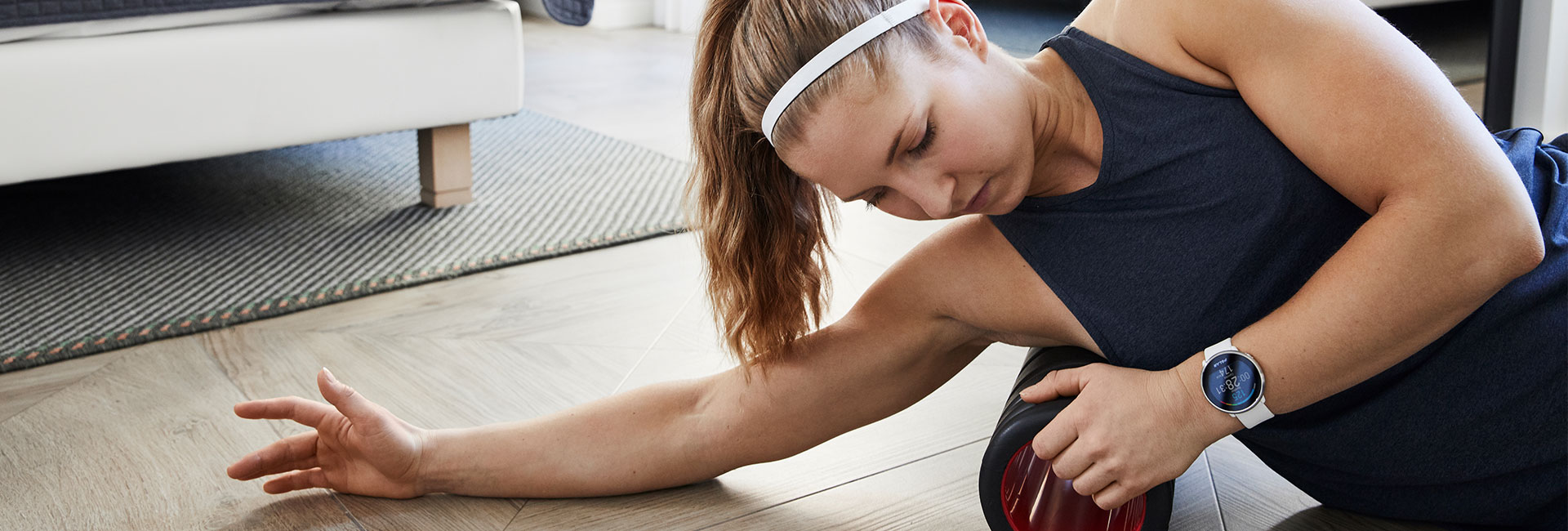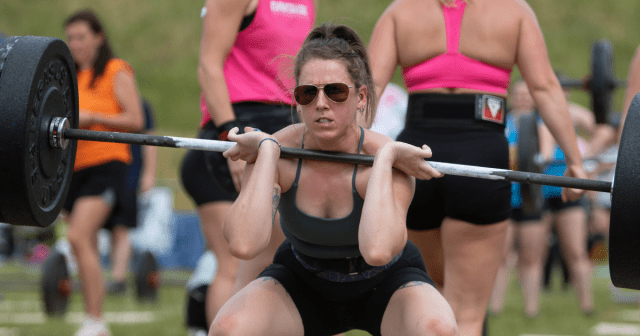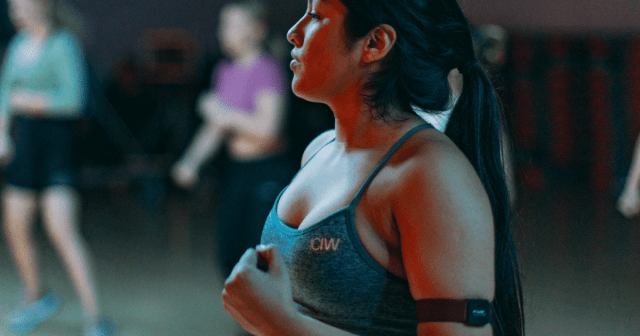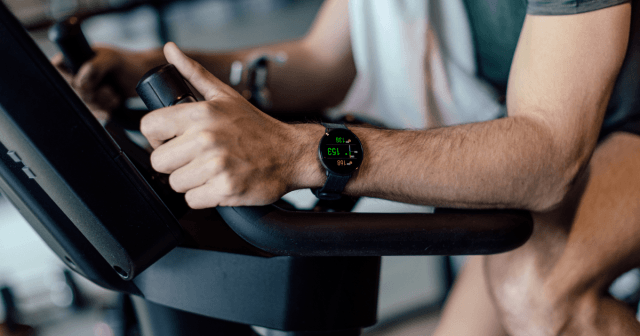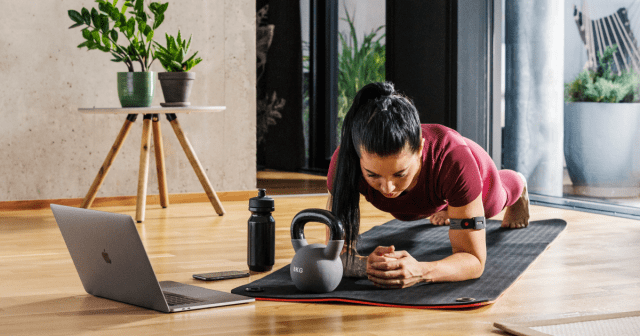One of the biggest misconceptions about attaining a fit and strong body is the glorified goal and misleading measuring stick of muscle soreness.
You know what I mean; you can walk into any gym, boot camp, exercise class, or personal training session and you’ll hear many people associating sore muscles with getting stronger and healthier and, of course, having done a killer workout.
But, does muscle soreness really mean what we think it does or are we looking for soreness in all the wrong places?
In truth, the fitness industry needs variation, differing opinions, and multiple methods of both developing and maintaining our fitness to truly be an industry at its best in promoting health. But, there are many facets of this industry which have gone awry and are actually detracting from the overall outcome of holistic wellness.
From almost three decades as a personal trainer and exercise therapist, I’ve racked up many a mile weaving my way through and around the iron jungles we call gyms, with plenty of scars and bruises on my shins to prove it.
I’ve also counted umpteen million repetitions for my clients and myself, I’ve loaded and unloaded millions of pounds of weights, and I’ve witnessed more exercise methods and programs than there are different kinds of protein bars.
As far as the overwhelming amount of opinions on what’s right, what’s wrong, and who’s got the absolute best exercise program and diet going, I’ve seen and heard them all.
With this article, I’m going to clearly define what muscle soreness really means, show you what normal and safe ranges of sore muscles are, and how to replace doing more with doing something different to keep your body progressing and healthy, instead of being sore and beat up.
What Does MUscle SOreness Really Mean?
It means you really killed that workout, right?
Not so fast!
In general, muscle soreness is a result of microscopic tears in the individual muscle fibers from exercise, or other activities you’re not used to doing. The amount and degree of these microscopic tears vary according to intensity, duration, and frequency of any particular exercise session.
This result is often referred to as DOMS (Delayed Onset Muscle Soreness), and is a term you’ll hear thrown around in almost all fitness arenas as an association to a great workout, when in fact, it could lead you to taking a number in the orthopedic’s waiting room.
There are also many who feel lactic acid is the culprit leading to muscle soreness. This is highly unlikely. Although lactic acid is the reason for that “burn” during exercise, it’s not causing muscle soreness. Lactic acid is simply the product of the body using up glucose and glycogen (stored energy from carbohydrates), especially during resistance training and sprinting.
Although I agree that muscle soreness can be a normal and healthy part of exercise, we have to know how to monitor and measure just how much soreness we should be having. And most importantly, what exactly is it in our bodies that’s getting sore.
3 crucial questions about muscle soreness
I understand why muscle soreness and the quality of a workout are easily linked together, but it’s an association which is often strained, misrepresented, and misleading.
When it comes to soreness, there are three crucial variables of which we need to be aware of:
- Where exactly is the soreness? Is it in the muscle, the tendons, the joint, or all of the above?
- Is the soreness affecting the way you move throughout the day?
- How long is the soreness lasting?
Question 1: Does the soreness go deeper than the muscle?
Let’s start by addressing exactly what it is that’s getting sore. Muscle soreness is one thing, but joint and tendon soreness is altogether a different monster.
With this said, we must be aware of exactly what it is that’s sore in our bodies. I think we all know what muscle soreness and stiffness feels like, but what about tendon and joint soreness?
Signs that soreness goes deeper than the muscle
By tracking your sleep, you can see how long you actually slept, how often and long you were awake during the night and whether you got enough of quality sleep.
- Dull, achy, or sharp pains within the joint
- Swelling in and around the joint
- Stiffness and discomfort when bending the joint
- Pain in the joint even when you’re not using it like when sitting, sleeping, etc.
- Difficulty sleeping from joint pain after exercise. This is a double whammy because sleep is gold when it comes to our bodies recuperating. Even if you’re sleeping, the quality of your sleep may take a big hit because of joint pain.
- Having to modify the way you move because of joint pain
- Dull achy pain in the muscles where they attach to the joints – tendons. Tendons attach muscle to the bone and have very poor blood flow, so when they get injured from over use or incorrect exercise, they stay injured.Tendonitis is a condition where the tendon never heals completely because of continued use. A very common site for tendon soreness and tendonitis is in the elbow and the patellar tendon at the bottom of the knee. Either way, sore tendons and especially tendonitis is a result of overuse or incorrect exercise form and technique.
If you’re experiencing any of these symptoms in your tendons and joints during and after exercise, or even when you’re just sitting around, something needs to change, quick!
Pain indicates that something is wrong.
Pain is a guarantee something is wrong and if not addressed with modifications to your exercise means and methods, it will end up costing you a lot more than a few days off from exercise.
Most importantly, have your doctor diagnose your joint pain and give you a plan of action to avoid future pain. It will most likely involve physical therapy and taking time off from exercise, but it will be worth it.
Now, if you’re not having joint pain and are certain the soreness is confined within your muscles, let’s talk about how to gauge how much soreness you should be having.
Question 2: Walk Like a Zombie, or Move Like a Champ?
Now, let’s take a look at the intensity of soreness. If your level of muscle soreness is causing you to walk like a zombie, look for bathroom stalls which have assistance rails, and feel muscle pain with the most basic daily physical movements, your workout was too intense.
Light to moderate soreness which doesn’t scream at you and doesn’t cause you to change the way you normally move is ideal.
Here’s something for you to remember:
If you have intense muscle soreness from your workouts causing difficulty in normal movements, there’s a high likelihood that your tendons and joints took a hit as well. And because you’re having to modify your normal daily movements, your joints are overcompensating and supporting you in ways they’re not meant to because your muscles are overworked and too fatigued.
Overall, soreness shouldn’t change the way you go through your daily routine, and if it does, lighten up, your body will appreciate it.
Question 3: How Long Should Muscle Soreness Last?
Now that you know intense soreness isn’t a good idea, let’s take a look at exactly how long your soreness should really be lasting.
In terms of the duration of your soreness, a good rule of thumb is to avoid having soreness which lasts for more than 72 hours. If your body is taking longer than this to get rid of soreness, there’s a very high likelihood, you’re doing too much.
Another problem with soreness lasting too long is that during your next workout, you’re more than likely going to be exercising a muscle which hasn’t fully recuperated.
I hear people say “You need to work the soreness out”, referring to using exercise as a means of alleviating and getting rid of soreness. This is absolutely not true.
Working out a muscle that isn’t fully recovered is counterproductive.
Now, massage and foam rolling are great ways to manipulate muscle tissue and fascia to relieve some soreness, but working out a sore muscle with exercise is the last thing you should do. Why? Because when you have any level of soreness, your muscle isn’t fully recovered, and working out an unrecovered muscle is counterproductive and will eventually lead to injury.
The human body is amazingly resilient and as you may know, the better conditioned we become, we typically have less soreness or no soreness at all. It’s very common for people to add more and more exercise until they get a desired level of soreness which eventually leads to overtraining and/or injury.
Restore the effectiveness and balance of your workouts
If light to moderate soreness is what you want from your workouts, try doing something different instead of doing something more.
If you apply these changes to what you’re currently doing in exercise, a little soreness can be expected, but you’ll restore the effectiveness, efficiency, and balance of your workouts.
Repetitions
Rotate different repetitions with your weight training from one week to the next. For example: One week use 12-15 reps, the next week use 8-10 reps, the 3rd week use 6-8 reps, and the 4th week go back to using 12-15 reps.
Exercises
Change specific exercises for each body part. For example: Alternate the squat and leg press and lying hamstring curl and standing hamstring curl. Choose different exercise for each body part every other week.
Stability
Alternate between unilateral and bilateral exercises. Unilateral means one arm or one leg at a time and bilateral means both arms or both legs at the same time.
For example: Instead of doing a barbell shoulder press, do the dumbbell shoulder press one arm at a time. Do 15 reps with one arm, then 15 with the other. This unilateral method causes the body to use one side independently from the other as well as really utilize your core muscles.
Oh yes, watch that heart rate too during unilateral exercises. This is the exact reason I use my Polar A370 during all of my weight training workouts. One thing I have found is that when I have unilateral workouts, I actually stay in an aerobic heart rate zone for almost the entire workout.
I also see all the workouts I’ve tracked with my A370 in the Polar Flow App after each workout and compare them to the last time I did the same workout. Try it out and see what your heart says.
Timing
Alternate rest times between your weight training sets. You could rest 1.5-minutes between all sets one week, 1-minute between all sets the next week, 30-45 seconds the 3rd week, and then switch back to 1.5-minute rest the 4th
Orders
Change the order of the exercises you do. Let’s say you do chest first, shoulders next, then triceps last. The next week, do triceps first, shoulders next, then chest last. Most people do back first then biceps last. Try switching this around and doing biceps first and then back last.
Rhythm
Go slow! During all weight training repetitions, use the 5-2 Rule. Make sure each repetition takes 5 full seconds with a complete pause at the top and bottom of each rep. This will keep the tension in the muscle and out of the joint. It also takes momentum out of the equation. Check your ego before you start, you’ll have to really lighten up that weight.
Environment
Try a different gym, a different exercise class, or get someone to work out with you. If you’re exercising outside by walking or running, take a different path, go to a different place, and get a walking/running buddy. Don’t forget your favorite playlist – music is a great motivator.
The truth About Muscle Soreness – FAR LESS PAINFUL Than you thought?
No matter how and where you choose to exercise, one thing is for sure – you’ll hear as many differing opinions on what’s right and what’s wrong as there are stars in the sky.
But I hope after reading through this article, you’re feeling confident that you now know the truth about muscle soreness.
- First of all, you have to make sure your soreness is in your muscles and not in your tendons and joints.
- Secondly, it’s crucial to know that your soreness should never cause you to modify the way you normally move or cause extreme discomfort.
- Next, monitor your soreness to make sure it’s not lasting for more than 72 hours, and just as importantly, remember that a lack of soreness does not mean your workouts aren’t effective.
- Lastly, making constant changes in your workouts will insure a much better balance all the way around for you and will keep your body on its toes, literally.
Enjoy your workouts but be very careful about what you hear in your exercise arena of choice. Yes, it’s a place where you can improve your fitness and health, but it’s also a site for sore lies.
Choose wisely, my friend.
If you liked this post, don’t forget to share so that others can find it, too.
Or give it a thumbs up!
I like this article
Please note that the information provided in the Polar Blog articles cannot replace individual advice from health professionals. Please consult your physician before starting a new fitness program.

